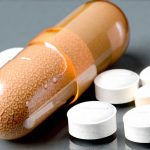Living with a sensitive bladder – often associated with conditions like overactive bladder (OAB), interstitial cystitis (IC), or simply heightened sensitivity – can significantly impact daily life. The constant urgency, frequency, and sometimes pain can be debilitating, leading many to seek ways to manage their symptoms effectively. While medication and behavioral therapies are crucial components of treatment, dietary adjustments often play a surprisingly powerful role in symptom management. Identifying and avoiding foods that trigger bladder irritation is a cornerstone of proactive self-care for those navigating this condition. It’s about understanding how certain substances can exacerbate symptoms and making informed choices to improve quality of life.
The relationship between diet and bladder health isn’t always straightforward, as triggers vary significantly from person to person. What bothers one individual might not affect another at all. This necessitates a degree of self-exploration and mindful observation. However, there are common culprits that frequently contribute to bladder irritation, stemming from their chemical composition or inherent properties. These foods often share characteristics like high acidity, spice levels, or caffeine content. The goal isn’t necessarily complete elimination for everyone, but rather understanding your personal tolerance levels and adjusting intake accordingly. This article will explore key food groups and substances to be mindful of when managing a sensitive bladder, offering practical insights into building a more comfortable and predictable daily routine.
Common Bladder Irritants: Dietary Culprits
Many individuals with sensitive bladders find that certain beverages are significant triggers for increased urgency and frequency. Caffeine, found in coffee, tea, and many sodas, is a well-known diuretic, meaning it increases urine production. While staying hydrated is essential, excessive fluid intake driven by caffeinated drinks can overwhelm the bladder. Similarly, alcohol acts as both a diuretic and a potential irritant to the bladder lining. Carbonated beverages, even those without caffeine, can also be problematic due to their acidity and the pressure they place on the bladder. Consider swapping these for water, herbal teas (avoiding citrus-based blends), or diluted fruit juices – always in moderation.
Beyond beverages, specific food groups are frequently implicated in bladder irritation. Citrus fruits like oranges, lemons, and grapefruits contain high levels of citric acid, which can directly irritate the bladder lining. Similarly, tomatoes and tomato-based products (sauces, ketchup) are also acidic. Spicy foods, containing capsaicin, can trigger inflammation and exacerbate symptoms, as can artificial sweeteners found in many diet drinks and sugar-free candies. It’s important to note that these aren’t universal triggers; some individuals can tolerate small amounts without issue, but it’s essential to pay attention to your body’s response after consumption.
Ultimately, a food diary is invaluable for identifying personal sensitivities. Track what you eat and drink alongside any changes in bladder symptoms – frequency, urgency, pain levels – over several weeks. This detailed record will help pinpoint specific foods that consistently exacerbate your condition, allowing you to make informed dietary adjustments tailored to your needs. Don’t underestimate the power of mindful eating and self-observation in managing a sensitive bladder. If you’re looking for more targeted information on what to avoid during symptom flare-ups, consider reviewing specific dietary recommendations.
Identifying Your Personal Triggers
The process of identifying personal triggers requires patience and consistency. Start by eliminating commonly cited irritants – caffeine, alcohol, citrus fruits, spicy foods, artificial sweeteners – from your diet for at least one to two weeks. This provides a baseline to assess how your symptoms change without these potential aggravators. After this elimination phase, slowly reintroduce each food or beverage one at a time, carefully monitoring your body’s response over the next 24-48 hours.
- Keep a detailed food diary documenting everything consumed and any associated bladder symptoms (urgency, frequency, pain).
- Be specific about portion sizes to understand how quantity impacts your reaction.
- Look for patterns – are certain foods consistently linked to symptom flare-ups?
- Remember that delayed reactions can occur; sometimes symptoms don’t appear immediately after consumption.
It’s also crucial to differentiate between genuine triggers and coincidental occurrences. A single instance of increased urgency doesn’t necessarily mean a food is problematic, but consistent correlation suggests a potential sensitivity. If you find it challenging to navigate this process independently, consider working with a registered dietitian or healthcare professional specializing in bladder health; they can provide personalized guidance and support. Understanding how diet impacts your symptoms is the first step towards long-term relief.
The Role of Hydration & Fiber
While avoiding irritants is vital, proper hydration remains paramount for bladder health. Paradoxically, restricting fluids to reduce urgency can actually concentrate urine, making it more irritating to the bladder lining. Aim for 6-8 glasses of water per day, spaced evenly throughout the day, but avoid large gulps or drinking excessive amounts at once. Sip steadily rather than chugging.
Fiber plays a surprisingly important role too. Constipation can put pressure on the bladder and exacerbate symptoms. A diet rich in fiber – from sources like whole grains, fruits (excluding citrus), and vegetables – promotes regular bowel movements and reduces this strain. However, be mindful of high-fiber foods that may also be irritants; for example, some individuals find broccoli or cabbage problematic.
Food Diary Best Practices
A successful food diary isn’t just about listing what you ate; it’s about capturing the context surrounding your consumption and its impact on your symptoms. Here are a few best practices to ensure accuracy and usefulness:
- Record everything – including snacks, drinks, condiments, and even small bites.
- Be specific about quantities – “a slice of pizza” isn’t as helpful as “two slices of pepperoni pizza.”
- Note the time you consumed each item.
- Rate your bladder symptoms on a scale (e.g., 1-10) for urgency, frequency, and pain levels.
- Include any other relevant factors – stress levels, physical activity, medication changes – as these can also influence bladder function.
By diligently following these guidelines and embracing a mindful approach to dietary adjustments, individuals with sensitive bladders can significantly improve their symptoms and regain control over their daily lives. Remember that managing this condition is an ongoing process of self-discovery and adaptation. To further refine your diet, explore strategies for incorporating bladder-friendly foods into everyday meals.





















